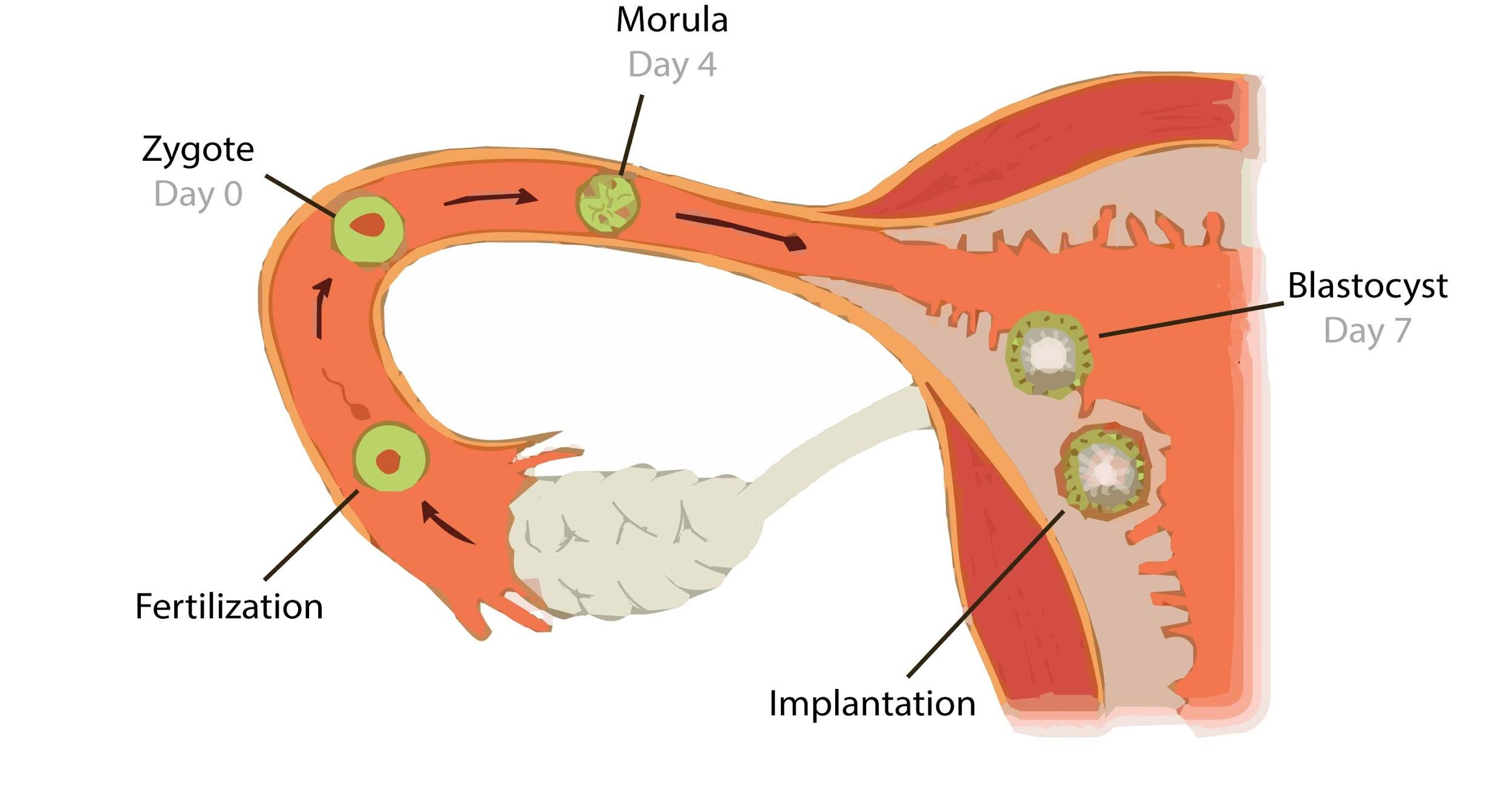
In the human female, the blastocyst
(a) Gets implanted in the endometrium by the trophoblast cells.
(b) Forms placenta even before implantation.
(c) Gets implanted into the uterus 3 days after ovulation.
(d) Gets nutrition from uterine endometrial secretion only after implantation.
Answer
575.1k+ views
Hint: Implantation is known as the process in which zygote after reaching more than 32 cell stages gets embedded into the uterus to form a structure known as the placenta. For this, the endometrial lining of the uterus should be present.
Complete Step by Step Answer:
The process of implantation is as follows:
- Zygote after fertilization undergoes division to form a 2- celled stage, 4- celled stage, 8- celled stage, etc. but does not increase in size.
- When it is at the 32- celled stage the cells which are known as blastomeres are arranged in the form of outer trophoblast and inner cell mass.
- There is also the presence of a fluid- filled cavity known as blastocoel.
- The trophoblast after hatching combines with the chorionic villi of the endometrium to form the placenta.

So, the correct option is 'Gets implanted in endometrium by the trophoblast cells'.
Additional information: Let us know more about the placenta:
The placenta is the structural and functional unit between the developing fetus and the mother's body.
The function of the placenta is to transport the mother's nutrients and oxygen to the fetus and remove oxygen and excretory products away from the fetus.
Placenta also acts as an endocrine tissue to help regulate the mother's body during pregnancy. It releases hCG, hPL, estrogens, and progesterone.
Note:
- Hatching is the process by which the blastocyst breaks open the covering of zona pellucida around it to implant itself in the uterus.
- The presence of blastocyst is a characteristic of mammals.
- Stem cells present in the inner cell mass are capable of giving rise to all tissues in the body.
Complete Step by Step Answer:
The process of implantation is as follows:
- Zygote after fertilization undergoes division to form a 2- celled stage, 4- celled stage, 8- celled stage, etc. but does not increase in size.
- When it is at the 32- celled stage the cells which are known as blastomeres are arranged in the form of outer trophoblast and inner cell mass.
- There is also the presence of a fluid- filled cavity known as blastocoel.
- The trophoblast after hatching combines with the chorionic villi of the endometrium to form the placenta.

So, the correct option is 'Gets implanted in endometrium by the trophoblast cells'.
Additional information: Let us know more about the placenta:
The placenta is the structural and functional unit between the developing fetus and the mother's body.
The function of the placenta is to transport the mother's nutrients and oxygen to the fetus and remove oxygen and excretory products away from the fetus.
Placenta also acts as an endocrine tissue to help regulate the mother's body during pregnancy. It releases hCG, hPL, estrogens, and progesterone.
Note:
- Hatching is the process by which the blastocyst breaks open the covering of zona pellucida around it to implant itself in the uterus.
- The presence of blastocyst is a characteristic of mammals.
- Stem cells present in the inner cell mass are capable of giving rise to all tissues in the body.
Recently Updated Pages
The number of solutions in x in 02pi for which sqrt class 12 maths CBSE

Write any two methods of preparation of phenol Give class 12 chemistry CBSE

Differentiate between action potential and resting class 12 biology CBSE

Two plane mirrors arranged at right angles to each class 12 physics CBSE

Which of the following molecules is are chiral A I class 12 chemistry CBSE

Name different types of neurons and give one function class 12 biology CBSE

Trending doubts
Which are the Top 10 Largest Countries of the World?

What are the major means of transport Explain each class 12 social science CBSE

Draw a labelled sketch of the human eye class 12 physics CBSE

Differentiate between insitu conservation and exsitu class 12 biology CBSE

The computer jargonwwww stands for Aworld wide web class 12 physics CBSE

State the principle of an ac generator and explain class 12 physics CBSE




